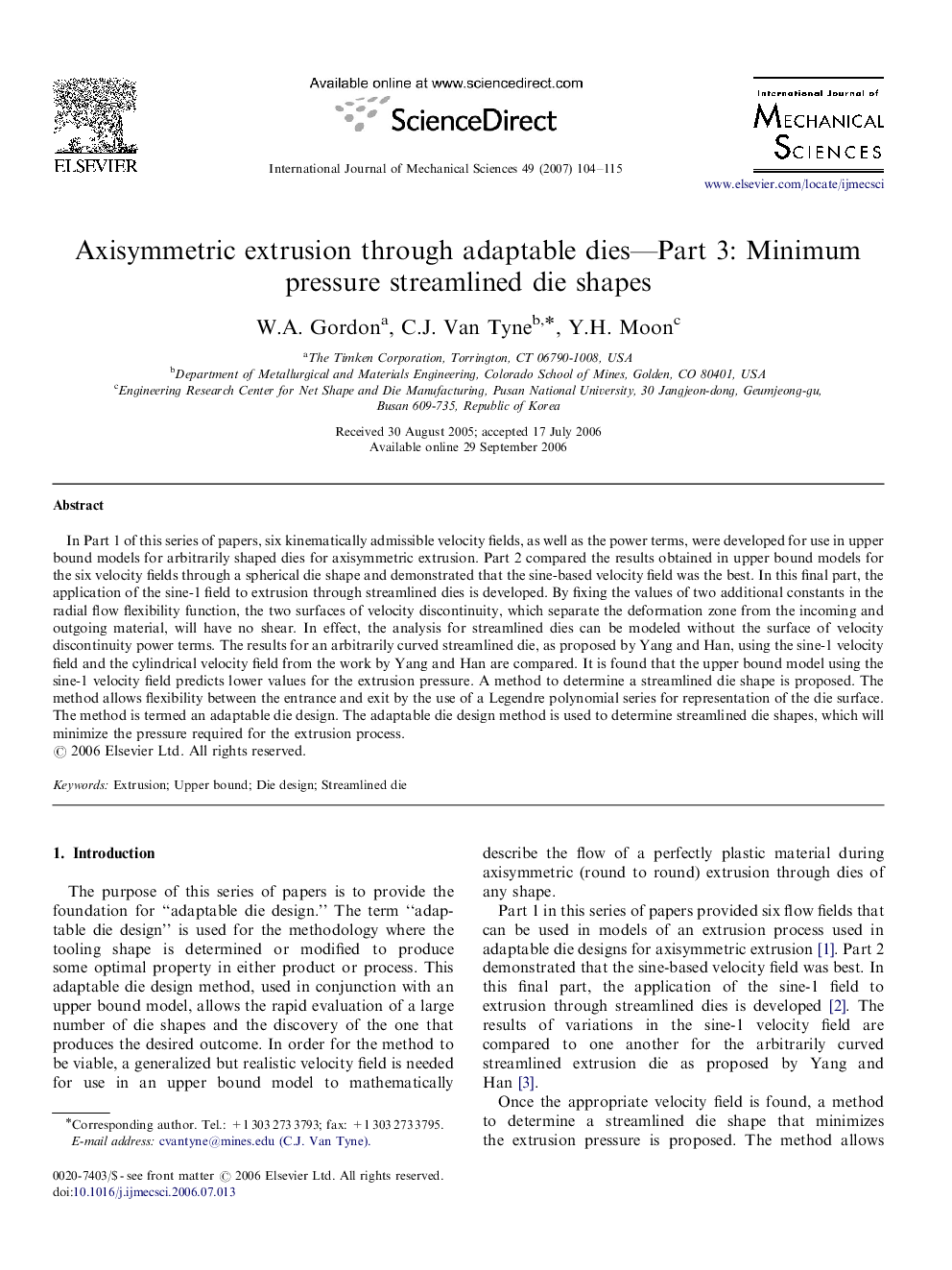| کد مقاله | کد نشریه | سال انتشار | مقاله انگلیسی | نسخه تمام متن |
|---|---|---|---|---|
| 784200 | 1465083 | 2007 | 12 صفحه PDF | دانلود رایگان |

In Part 1 of this series of papers, six kinematically admissible velocity fields, as well as the power terms, were developed for use in upper bound models for arbitrarily shaped dies for axisymmetric extrusion. Part 2 compared the results obtained in upper bound models for the six velocity fields through a spherical die shape and demonstrated that the sine-based velocity field was the best. In this final part, the application of the sine-1 field to extrusion through streamlined dies is developed. By fixing the values of two additional constants in the radial flow flexibility function, the two surfaces of velocity discontinuity, which separate the deformation zone from the incoming and outgoing material, will have no shear. In effect, the analysis for streamlined dies can be modeled without the surface of velocity discontinuity power terms. The results for an arbitrarily curved streamlined die, as proposed by Yang and Han, using the sine-1 velocity field and the cylindrical velocity field from the work by Yang and Han are compared. It is found that the upper bound model using the sine-1 velocity field predicts lower values for the extrusion pressure. A method to determine a streamlined die shape is proposed. The method allows flexibility between the entrance and exit by the use of a Legendre polynomial series for representation of the die surface. The method is termed an adaptable die design. The adaptable die design method is used to determine streamlined die shapes, which will minimize the pressure required for the extrusion process.
Journal: International Journal of Mechanical Sciences - Volume 49, Issue 1, January 2007, Pages 104–115